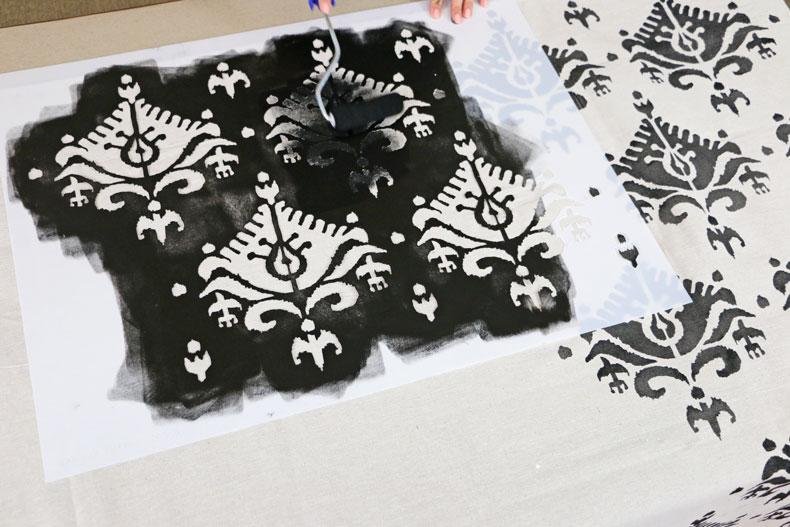A Bit of History of “Stenciling”, One of the Oldest Drawing Techniques.
The use of stencils dates back over 37 thousand years, as evident in Neanderthal cave art found in Spain. Those stencils were shapes from the natural world and daily life: human hands, animals, hunting scenes, and ritual all figure prominently.
Over time, the use of stencils spread throughout the ancient world. Many of the detailed drawings and intricate art found in Egyptian tombs or along the walls of the city of Pompeii were results of stencils. stenciling was a simple and well-thought-out way to reproduce the same pattern over and over again.
The Chinese were the first to develop a paper-based stencil, around 105 AD, and used the invention to advance their printing techniques. Soon, stenciling made the transition to cloth and colourful patterns were transferred onto garments. Then Japanese introduce the technique called Katazome, in which fabrics were dyed with stencils, and used the paste resist method. In this method a negative stenciled design was created on the fabric.
stenciling eventually spread to Europe, thanks to the trade routes from the East. The technique of stenciling became quite popular, and was used to add colour to master prints. Stencils became handy in mass productions of items, including manuscripts, playing cards, book illustrations, fabrics, and wallpaper.
Immigrants brought the use of stenciling with them to the New World, and once again the technique was employed in a variety of ways and new styles were developed. Stencils were used as decoration in the home, on furniture, and in works of art. stenciling once again became popular for architectural designs in the early 20th century, as craftsmen took advantage of mass-produced designs from an array of periods, including Renaissance, Victorian, and Art Deco. This stenciling style can still be found in public buildings, churches, and homes.
Stencils and their applications;
How to pick stencils for your home. Uses of stencils on different materials. Finding the right pattern of stencils.
One of the fastest growing trends in home decorating recently has been stencil design. Using stencils to adds a creative touch to any home is an inexpensive way to incorporate the styles and colours suitable to one’s tastes and colour scheme of one’s home. You do not need to be an artist to have beautiful artistic expressions on your walls and furniture, you just need a good imagination and be able to follow instructions. Stencil designs are an easy and fun way to transform your home.
There are a number of ways in which you can use stencil design. Most people use stencils on walls, but it is also used successfully on furniture, glass such as mirrors and windows, and on fabrics. There are many people, who take stenciling as a hobby to create beautiful home decor items, to name few are vases, cushion covers, bed-spreads, wooden furniture etc. Some use them to print patterns on clothes, like t-shirts.
There are so many patterns and designs of stencils that it is easy to find one that suits your taste and decor. Though stenciling is fun and easy to do, you will have more success if you do a bit of research to learn about the right kinds of brushes and paints to use with stenciling technique.

